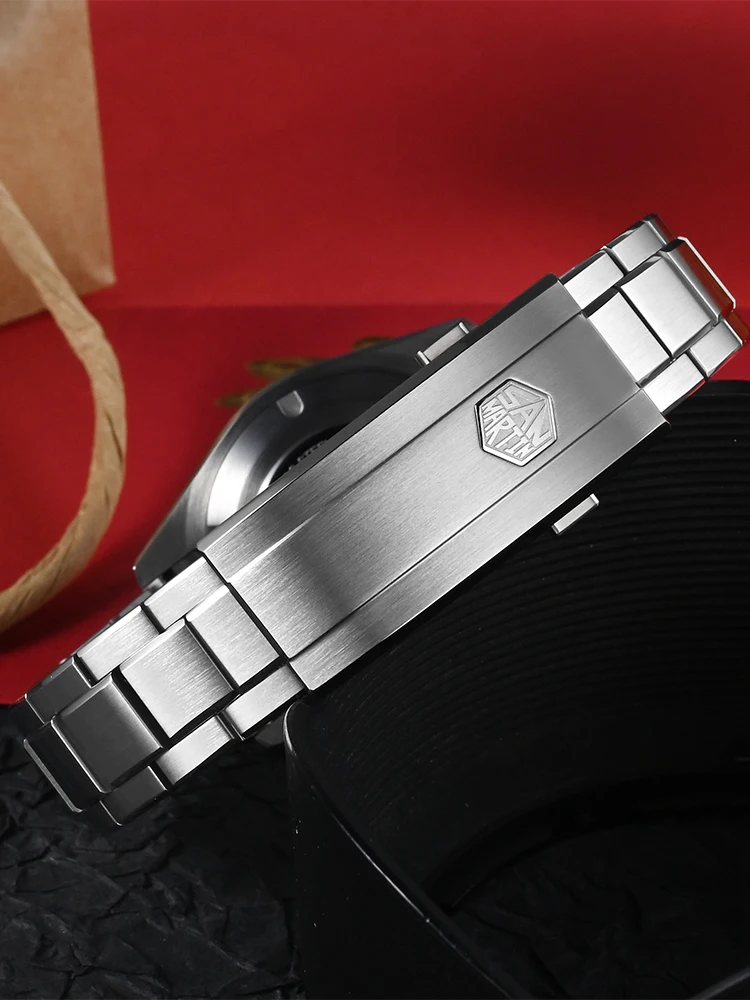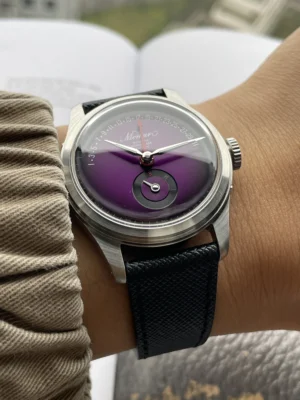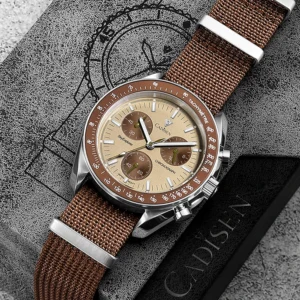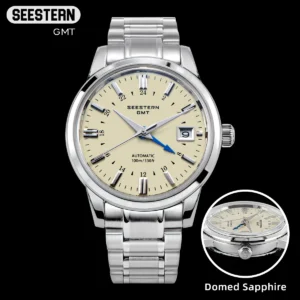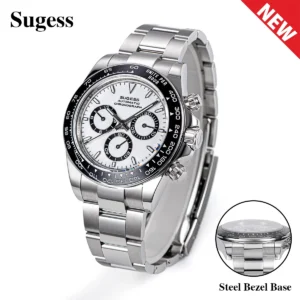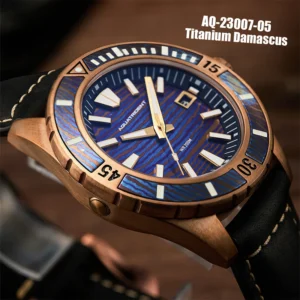Introduction to the Heartbeat of Horology
There’s something uniquely captivating about mechanical watches that sets them apart from other accessories. Unlike their digital counterparts, these timepieces are alive with motion—tiny mechanical hearts that beat steadily throughout the day. Open heart watches take this fascination a step further by featuring a deliberate window or aperture in the dial, offering a glimpse into the soul of the timepiece.
At the center of this horological theater lies the balance wheel and escapement—the true stars of open heart designs. These components work in harmony, creating the steady rhythm that powers the watch. What makes open heart timepieces so alluring is the ability to witness this perpetual motion directly on your wrist, a constant reminder of the intricate craftsmanship contained within.
In this article, we’ll explore both the artistic expression and technical precision that make open heart watches so fascinating. From understanding the specific components visible through the aperture to appreciating the meticulous decoration techniques applied to these tiny mechanical marvels, we’ll delve into what makes these timepieces special. We’ll also explore how open heart designs differ from their skeleton counterparts and provide guidance on selecting a quality piece that matches your preferences.
The tradition of mechanical watchmaking spans centuries, with rich historical developments that have evolved into the modern interpretations seen in today’s open heart watches. For those new to these remarkable timepieces, our collection of open heart automatic watches showcases the perfect balance between traditional craftsmanship and contemporary design.
Understanding Open Heart Design: The Window to Mechanical Artistry
An open heart watch features a strategically placed opening in the dial that reveals the watch’s regulating organ—typically the balance wheel and escapement. While fully skeletonized watches expose most of the movement, open heart designs are more selective, offering a focused glimpse of the most dynamic parts while maintaining the integrity of the dial.
This deliberate window into the movement serves both aesthetic and philosophical purposes. Beyond the visual appeal, it creates a connection between the wearer and the mechanical heart of the timepiece, allowing observation of the constant, rhythmic motion that marks the passing of time.
Open heart apertures come in various shapes and sizes:
– Circular openings that frame the balance wheel perfectly
– Crescent shapes that reveal a portion of the movement
– Irregular or artistic cutouts that complement the overall dial design
Watchmakers carefully consider the positioning of these apertures, with the 6 o’clock position being particularly popular as it balances the design without interfering with time reading. The success of an open heart watch often depends on this delicate balance—revealing enough to fascinate while maintaining enough dial real estate for legibility and aesthetics.
The earliest open heart designs emerged as watchmakers sought to showcase their mechanical artistry without sacrificing the protection and legibility of a full dial. Today, these designs have evolved into a distinct category that appeals to those who appreciate mechanical watches but prefer some dial structure compared to fully open heart and skeleton designs.
Key Visible Components: The Stars of the Horological Show
The Balance Wheel: The Beating Heart
The balance wheel serves as the true heart of a mechanical watch, oscillating back and forth at a consistent rate to regulate timekeeping. In most modern watches, this component beats at 21,600 or 28,800 vibrations per hour—translating to 6 or 8 beats per second. This perpetual motion makes it the most dynamic and visually captivating element in an open heart design.
Visually, the balance wheel features a polished rim with several adjustment screws positioned around its circumference. These screws aren’t merely decorative—they allow watchmakers to fine-tune the wheel’s weight distribution and affect the watch’s timekeeping accuracy. The wheel works in conjunction with the hairspring, which coils and uncoils with each oscillation, creating the rhythmic “breathing” motion that watch enthusiasts find so mesmerizing.
The Escapement: The Mechanical Pulse
Working alongside the balance wheel is the escapement—a mechanism comprised of the escape wheel and pallet fork. This ingenious system controls the release of energy from the mainspring in carefully measured amounts, transferring power to the balance wheel while simultaneously advancing the watch’s hands.
The escapement creates the distinctive “tick-tock” sound associated with mechanical watches. What makes this component particularly fascinating through an open heart aperture is witnessing the precise interaction of the escape wheel teeth with the pallet fork—a mechanical dance that has remained fundamentally unchanged for centuries despite its incredible precision.
Supporting Cast: Bridges, Jewels, and Springs
Surrounding the primary components are several supporting elements that add both functional and aesthetic value to the open heart display:
- The balance bridge: A meticulously finished metal component that secures the balance wheel assembly
- Ruby jewel bearings: Synthetic rubies (recognizable by their distinctive red color) that reduce friction at pivot points
- The hairspring: A delicate spiral spring that works with the balance wheel to regulate timekeeping
- Polished screws: Often blued through a heat treatment process, adding a splash of color to the mechanical tableau
Together, these elements create a miniature mechanical ecosystem that’s as beautiful as it is functional. The craftsmanship involved in creating these components at such a small scale—many measuring mere millimeters—represents the pinnacle of precision engineering.
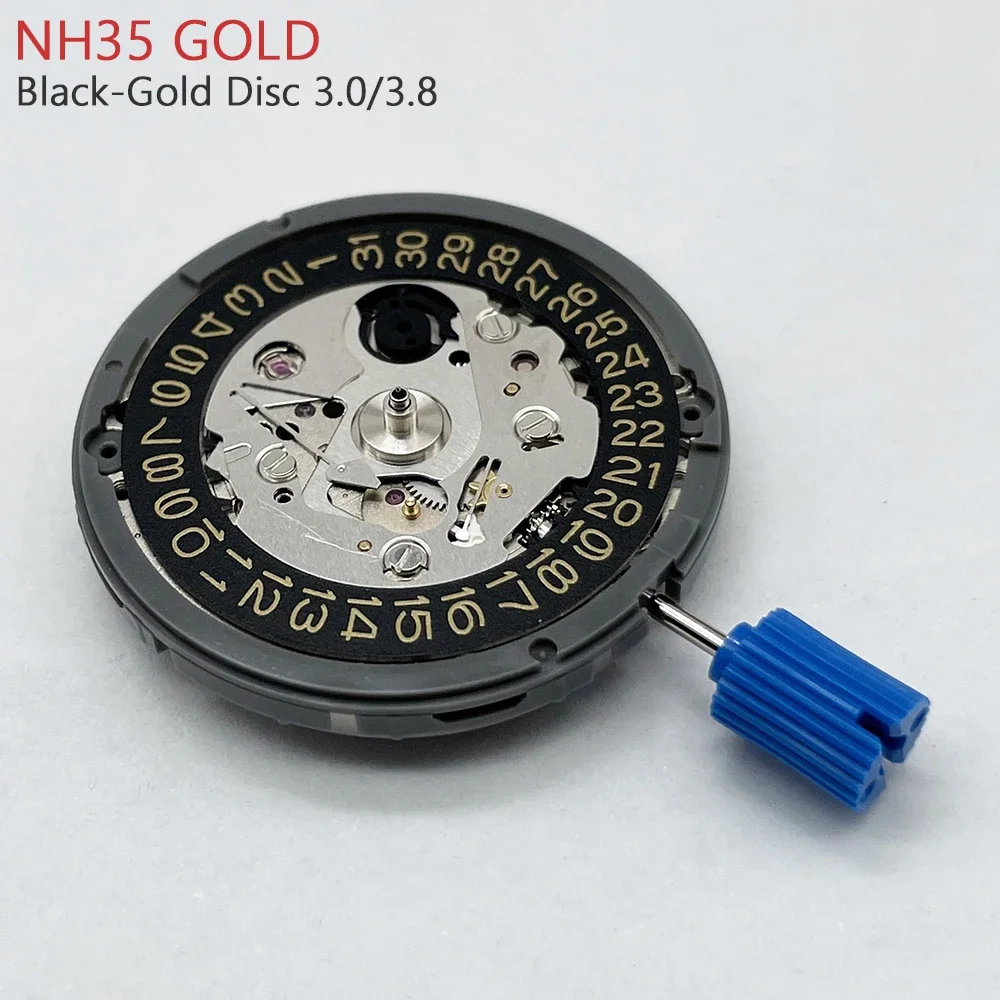
For those interested in seeing even more mechanical components in action, automatic skeleton watches offer an expanded view of the movement’s architecture.
Open Heart vs. Skeleton Watch: Understanding the Distinction
While both styles celebrate movement visibility, open heart and skeleton watches represent different approaches to revealing the mechanical beauty within. Understanding these differences helps appreciate each style’s unique characteristics:
| Feature | Open Heart Watches | Skeleton Watches |
|---|---|---|
| Dial Coverage | 70-90% intact | 10-30% intact |
| Visibility | Focused on specific components | Most/all movement visible |
| Manufacturing | Selective aperture in standard dial | Extensive material removal throughout |
| Price Range | Generally more accessible | Typically commands premium |
| Readability | Better time legibility | Can sacrifice some legibility |
An open heart watch features a strategic window or aperture that reveals only the most dynamic parts of the movement—typically the balance wheel and escapement. The rest of the dial remains intact, providing contrast and framing for the mechanical showcase. This focused approach highlights the “heartbeat” while maintaining dial integrity and readability.
In contrast, skeleton watches undergo extensive material removal from both the dial and the movement plates themselves. This openworking process (sometimes called “skeletonization”) reveals the maximum amount of mechanical components, often leaving just enough material to maintain structural integrity. The result is a more comprehensive view of the movement but sometimes at the expense of easy time reading.
A third related style—“openworked” dials—falls somewhere between these approaches, with decorative cutouts that reveal more than an open heart but less than a full skeleton design.
The various visual styles in mechanical watches offer different aesthetic experiences while serving the same timekeeping function. For those who appreciate maximum movement visibility, our collection of mechanical skeleton watches showcases the full spectrum of these intricate designs.
The Artistic Merit: Finishing and Decoration in the Open Heart
What elevates a great open heart watch beyond mere mechanical exposure is the level of finishing and decoration applied to the visible components. These traditional techniques transform functional parts into miniature works of art:
- Côtes de Genève (Geneva stripes): Parallel decorative lines that create a subtle, wave-like pattern across movement bridges and plates
- Perlage (circular graining): Overlapping circular patterns that create a pearl-like appearance, often applied to visible plates
- Anglage (beveled edges): Meticulously polished, angled edges on movement components that catch light beautifully
- Blued screws: Heat-treated steel screws that develop a distinct blue hue, adding color contrast to the movement
- Snailing: Circular brush pattern often applied to wheels, creating a spiral effect
- Polishing: Mirror-like finishing on select components that enhances light reflection
These decorative elements aren’t merely aesthetic additions—they represent centuries of watchmaking tradition. Applied by hand in high-end timepieces or through precise machine processes in more accessible watches, these finishes demonstrate the watchmaker’s commitment to beauty even in areas that might rarely be seen.
Different watch brands approach movement decoration according to their heritage and price positioning. Some focus on traditional Swiss finishing techniques, while others may adopt more industrial or modern approaches. The level of decoration visible through an open heart aperture often corresponds directly with the watch’s price point, with higher-end models featuring more intricate and hand-applied finishes.
Proper finishing not only enhances visual appeal but can contribute to a watch’s longevity. Many of these techniques actually improve component performance and durability, helping to explain how long automatic watches last when properly maintained.
The Engineering Challenge: Balancing Form and Function
Creating an effective open heart design involves far more engineering complexity than simply cutting a hole in the dial. Watchmakers must address several technical challenges to ensure the watch remains functional, durable, and reliable despite its exposed components.
The dial itself provides structural support in traditional watches, so removing material requires compensatory reinforcement elsewhere. Engineers must ensure that the movement remains properly secured within the case despite the modified dial structure. This often involves specialized mounting systems or reinforced chapter rings.
The balance wheel and escapement—the components most commonly featured in open heart designs—are also among the most delicate parts of the watch. Exposing these elements increases their vulnerability to:
- Dust and particulate contamination
- Moisture intrusion
- Accidental damage during servicing
- UV light exposure that can degrade lubricants
Innovative watchmakers overcome these challenges through careful design considerations. Special gaskets and sealing techniques maintain water resistance despite the dial opening. Movement components visible through the aperture may receive additional protection or specialized lubricants to withstand greater exposure.
Some brands even modify movement architecture specifically for open heart presentation, repositioning components to enhance visual appeal while maintaining functional integrity. These adaptations demonstrate how evolution in watch technology continues to push the boundaries of what’s possible in mechanical timepieces.
The most successful open heart watches achieve a perfect balance: revealing enough mechanical beauty to captivate while implementing sufficient protective measures to ensure the watch remains reliable for daily wear.
Why Choose an Open Heart Design: The Unique Appeal
The allure of open heart watches stems from several factors that make them particularly appealing to watch enthusiasts and casual wearers alike:
- Mechanical Authentication: In an age of quartz and digital timekeeping, the visible motion instantly confirms the mechanical nature of the timepiece
- Perpetual Animation: Unlike static watch elements, the balance wheel provides constant movement and visual interest
- Technical Appreciation: Allows observation of horological principles in action without requiring removal of the watch
- Conversational Value: Creates natural opportunities for discussion about mechanical watchmaking
- Design Balance: Offers mechanical showcase while maintaining more dial space than fully skeletonized models
- Versatility: Works across formal and casual contexts, with options ranging from subtle to statement-making
Many wearers develop an almost meditative relationship with their open heart timepieces, finding moments of calm in observing the steady oscillations of the balance wheel throughout the day. This emotional connection transcends the watch’s timekeeping function, transforming it into a philosophical reminder of time’s constant passage.
For those seeking distinctive timepieces with character, our collection of unique automatic watches includes several open heart models with compelling design approaches.
Factors to Consider When Choosing an Open Heart Watch
- Aperture Size and Placement
The size and positioning of the open heart aperture dramatically affects both aesthetics and wearability. Consider how different placements impact the overall balance:
– 6 o’clock position: Classic and balanced, minimal impact on time reading
– 12 o’clock position: Bold and distinctive, may compete with brand logo
– 9 o’clock position: Uncommon and asymmetrical, creates visual interest
– Central placement: Makes the mechanical elements the focal point of the entire dial
The aperture size should provide adequate visibility of the moving components while maintaining enough dial real estate for clear time reading.
- Movement Quality and Origin
The visible movement components should demonstrate quality appropriate to the watch’s price point. Research the movement manufacturer’s reputation for reliability and finishing quality. While in-house movements often receive more attention to decoration, many third-party movements (such as those from Sellita, Miyota, or Seiko) offer excellent performance and can be beautifully finished.
- Finishing and Decoration Level
Examine the level of decoration visible through the aperture. Even at modest price points, components should show attention to detail with proper finishing. Look for:
– Even application of surface treatments
– Clean edges on visible parts
– Proper alignment of all components
– Consistent coloration of treated elements like blued screws
- Integration with Overall Design
The open heart element should feel like an intentional part of the overall design rather than an afterthought. Consider how well the aperture complements other dial elements:
– Does the shape echo design themes found elsewhere in the watch?
– Do the hands and indices work harmoniously with the opening?
– Is there a cohesive color strategy that incorporates the visible movement?
- Practical Considerations
Despite their mechanical showcase, open heart watches should remain practical timekeepers:
– Water resistance should be adequate for intended use
– The watch should maintain good legibility despite the open section
– Consider case size and thickness relative to your wrist
– Evaluate how easily the watch can transition between different wear scenarios
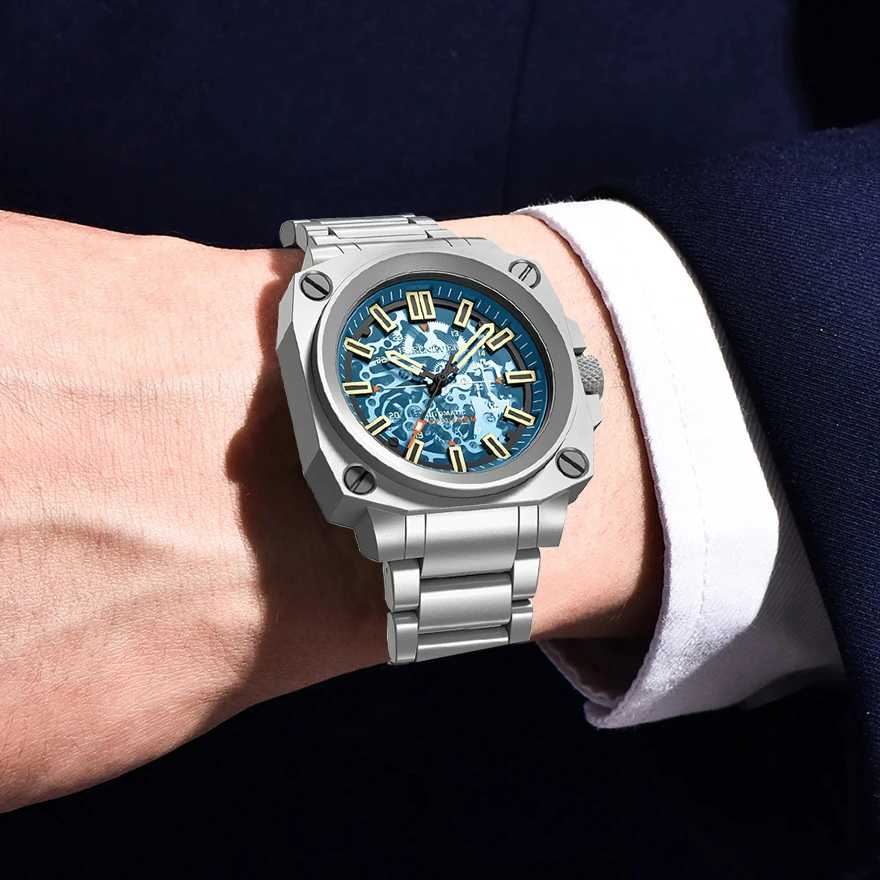
Notable Open Heart Watches Across Price Categories
Entry-Level Excellence (Under $500)
At this price point, open heart watches typically feature reliable Japanese or Chinese automatic movements with modest decoration. While the finishing won’t match luxury offerings, many provide exceptional value with:
– Focused apertures revealing the balance wheel and escapement
– Basic movement finishing appropriate to the price
– Solid construction and water resistance
– Design variety spanning classic to contemporary
Notable features at this level include stainless steel cases, mineral or sapphire crystals, and reliable workhorse movements with power reserves between 38-42 hours. Some models incorporate additional complications like power reserve indicators or small seconds dials that complement the open heart feature.
Mid-Range Masterpieces ($500-$2,000)
The mid-range category offers significantly enhanced finishing quality and movement refinement:
– More elaborate aperture designs with thoughtful integration
– Superior movement decoration including Geneva stripes or perlage
– Higher-grade materials throughout the watch
– Better attention to detail in case finishing and dial work
Watches in this category often feature Swiss or high-grade Japanese movements with better accuracy and more refined decoration. Many incorporate additional premium elements like domed sapphire crystals, exhibition casebacks, and more complex dial constructions that frame the open heart display.
Luxury Open Heart Creations ($2,000+)
At the luxury level, open heart watches achieve their highest expression:
– Exceptional hand-finishing of visible components
– Integration of additional complications
– Premium materials including precious metals
– Sophisticated movement architecture specifically designed for visual appreciation
The finest examples at this tier feature movements that are architecturally designed to maximize visual appeal through the aperture. Components are often hand-beveled, polished, and decorated to the highest standards. Some incorporate additional technical features like silicone hairsprings or free-sprung balance wheels that enhance both performance and visual appeal.
For those exploring various options across price ranges, our automatic watches collection offers examples from accessible to premium timepieces.
Practical Questions About Living with an Open Heart Watch
Are open heart watches less reliable?
When properly designed and manufactured, open heart watches maintain reliability comparable to standard models. The visible components are the same ones found in any mechanical watch—they’re simply visible rather than hidden. Quality open heart watches incorporate sufficient protection to ensure the exposed elements remain properly functioning.
Do they require different maintenance?
Open heart watches generally follow the same maintenance schedule as standard mechanical watches, typically requiring service every 5-7 years. However, the visible components may benefit from slightly more frequent inspection to ensure no dust has accumulated in the aperture area.
Can open heart watches be worn daily?
Absolutely! Most modern open heart watches are designed for regular wear. Like any mechanical watch, they benefit from being worn regularly to keep the movement operating smoothly. Their water resistance ratings and case construction typically match those of standard models in the same collection.
Does the aperture affect water resistance?
The aperture itself doesn’t compromise water resistance when properly engineered. The crystal covering the dial creates the water-tight seal, not the dial itself. However, due to their mechanical showcase, many open heart watches are designed more for dress or casual wear rather than extreme water sports.
Will dust accumulate in the opening?
The space between the crystal and dial remains sealed against dust infiltration, just as in conventional watches. The components visible through the aperture are protected by the same crystal that covers the entire dial. Any dust accumulation would only occur during servicing when the watch is opened, at which point a watchmaker would clean the components.
For those interested in maximum movement visibility while maintaining excellent reliability, our skeleton watches collection offers additional options with varying degrees of transparency.
The Emotional Connection: Why Movement Visibility Matters
Beyond technical specifications and design considerations lies the true appeal of open heart watches: the emotional connection they foster with their wearers. There’s something profoundly satisfying about glancing at your wrist and seeing physical proof of time being measured—a tiny mechanical ecosystem continuously at work.
In our increasingly digital world, where time is displayed as static numbers on screens, the rhythmic oscillation of a balance wheel provides a tangible connection to traditional craftsmanship. This mechanical heartbeat serves as a reminder that not everything needs to be instant or electronic to be valuable.
Many wearers develop an almost meditative relationship with their open heart timepieces, finding moments of calm in observing the steady oscillations throughout the day. The visual confirmation of the watch’s operation creates a deeper bond between the timepiece and its owner—a relationship built on appreciation for the engineering marvel strapped to their wrist.
Open heart watches successfully bridge historical traditions with contemporary design sensibilities. They honor centuries-old watchmaking principles while presenting them in a format that appeals to modern aesthetic preferences. This balance makes them particularly compelling for those who appreciate heritage but live firmly in the present.
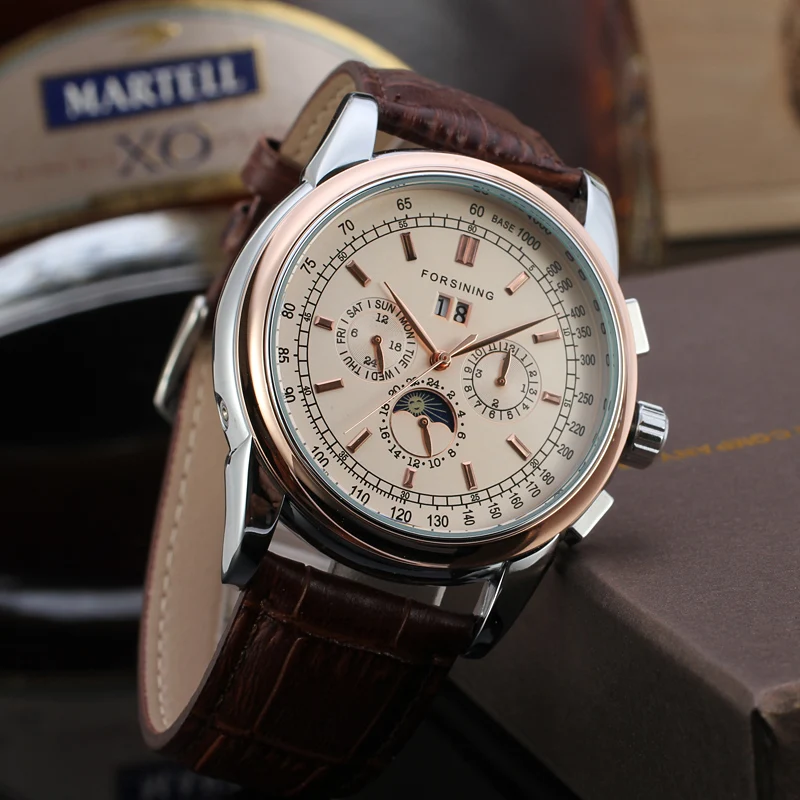
Classic Automatic Dress Watches, Day Date Automatic Watches, Perpetual Calendar Automatic Watches
Price range: $540.60 through $574.60 Select options This product has multiple variants. The options may be chosen on the product pageAutomatic Chronograph Watches, Chronograph Pilot Watches
Price range: $233.36 through $237.58 Select options This product has multiple variants. The options may be chosen on the product pageClassic Automatic Dress Watches, GMT Automatic Watches, GMT Pilot Watches
Price range: $1,240.86 through $1,463.33 Select options This product has multiple variants. The options may be chosen on the product pageAutomatic Chronograph Watches, Classic Style Dive Watches
$3,053.06 Select options This product has multiple variants. The options may be chosen on the product pageAutomatic Skeleton Watches, Open Heart Automatic Watches
$98.36 Select options This product has multiple variants. The options may be chosen on the product pageBronze Automatic Watches, Military Inspired Automatic Watches, Professional Spec Dive Watches
Price range: $1,442.21 through $1,442.82 Select options This product has multiple variants. The options may be chosen on the product page
The fascinating world of mechanical movements extends beyond basic timekeeping, with specialized complications like chronograph movement watches offering additional mechanical complexity and functionality.
Supplemental Content: Beyond the Open Heart
While open heart watches offer a focused glimpse into the movement, several alternative approaches to movement visibility exist:
Exhibition casebacks provide a comprehensive view of the movement from the underside while maintaining a traditional solid dial. This approach allows appreciation of the mechanical workings without altering the watch’s face.
Full sapphire cases take transparency to the extreme, with crystal components forming both the front and back of the case, as well as portions of the sides. These designs offer unprecedented movement visibility from multiple angles.
Dial-side complications like tourbillons or moonphase indicators offer mechanical showcase beyond the standard balance wheel. These additional features complement open heart designs by providing multiple points of visual interest.
The evolution of movement visibility continues as watchmakers experiment with new approaches. Some contemporary designs use multilevel transparent dials, colored sapphire elements, or innovative case materials to enhance the visual experience. Others incorporate luminescent components in the visible movement parts, allowing the mechanical showcase to continue even in darkness.
For those drawn to astronomical complications with beautiful mechanical displays, our moonphase automatic watches offer another dimension of horological artistry.
At Sharp Aspect, we believe that the visible beating heart of a mechanical timepiece creates a unique connection between the watch and its wearer—a relationship built on appreciation for craftsmanship, engineering, and the artful measurement of time’s passage.

